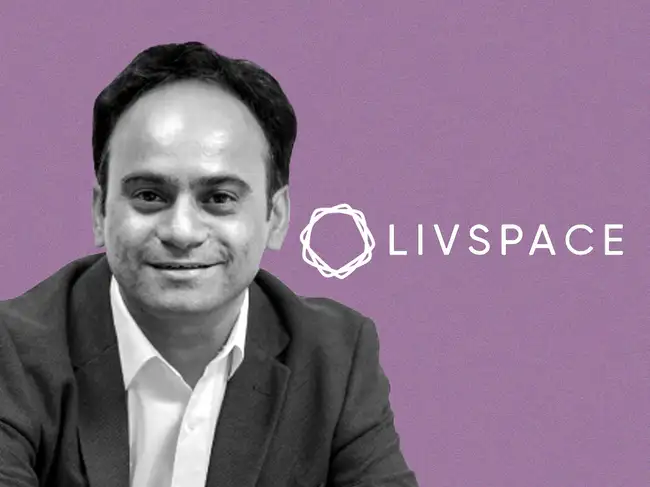
Bengaluru-based omnichannel home interiors platform Livspace has reported a robust 23% year-on-year revenue growth in FY25, reaching ₹1,460 crore, continuing its strong performance after an 85% surge in FY23 and 20% growth in FY24. The company, backed by global investors including IKEA and Khosla Ventures, has also significantly improved its profitability metrics, reducing losses by 45% in FY24 to ₹183 crore while expanding gross margins to 40%.
Financial Performance: Key Metrics
Revenue Growth Trajectory
- FY23: ₹850 crore (85% growth)
- FY24: ₹1,185 crore (20% growth)
- FY25: ₹1,460 crore (23% growth)
Profitability Improvements
- Loss Reduction: 45% decrease in FY24 to ₹183 crore
- Gross Margins: Expanded to 40% through operational efficiencies
- EBITDA Improvement: Moving toward breakeven through scale and cost optimization
Funding and Valuation
- Total Raised: ~$250 million
- Key Investors: IKEA, Khosla Ventures, Jungle Ventures, TPG Growth, Goldman Sachs
- Current Status: Unicorn (valued over $1 billion)
Business Model and Market Position
Core Offerings
- Modular Solutions: Customizable furniture and interior systems
- Full-Home Interiors: End-to-end design and execution
- Technology Platform: AI-powered tools like Canvas for real-time visualization
- Supply Chain Integration: Managed logistics and installation network
Geographic Reach
- India: 70+ cities including metros and tier-2 urban centers
- International: Singapore market with expanding presence
Competitive Advantages
- Technology Integration: Proprietary platforms streamlining design and project management
- Supply Chain Control: End-to-end quality and timeline management
- Brand Trust: Established reputation in premium home interiors segment
Reverse Flip: Returning to Indian Domicile
The Plan
- Timeline: Target completion by December 2025
- Structure: Moving holding company from Singapore to India
- Rationale:
- Alignment with Atmanirbhar Bharat initiatives
- Better access to Indian capital markets
- Simplified corporate structure
- Preparation for potential IPO
Industry Context
- Growing Trend: Several Indian startups reversing overseas domiciles
- Recent Precedents: Companies like Awfis successfully executing similar moves
- Regulatory Support: Government policies encouraging Indian incorporation
Market Opportunity and Growth Drivers
Indian Home Interiors Market
- Market Size: $20+ billion and growing rapidly
- Key Drivers:
- Urbanization and rising disposable incomes
- Nuclear families and home ownership trends
- Increased focus on personalized living spaces
- Post-pandemic home improvement surge
Livspace’s Growth Levers
- Category Expansion: Moving into higher-margin full-home projects
- Geographic Penetration: Deeper tier-2 and tier-3 city presence
- Technology Adoption: AI and AR for enhanced customer experience
- Supply Chain Optimization: Cost efficiencies through scale
Technology Innovation: The Backbone of Growth
Canvas Platform
- Real-time Visualization: 3D rendering and virtual walkthroughs
- AI-powered Design: Personalized recommendations based on user preferences
- Project Management: Timeline tracking and milestone management
Supply Chain Technology
- Vendor Management: Automated partner onboarding and performance tracking
- Inventory Optimization: Demand forecasting and stock management
- Logistics Coordination: Installation scheduling and quality control
Leadership Vision and Future Roadmap
Anuj Srivastava, Co-founder & CEO
“Our tech-first approach and end-to-end control are driving sustainable growth as we gear for a homecoming. The reverse flip to India aligns with our long-term vision and the country’s growing economic prominence.”
Strategic Priorities for 2026
- Complete Reverse Flip: Finalize India domicile by December 2025
- IPO Preparation: Potential public listing in 2026
- International Expansion: Explore new markets in Southeast Asia and Middle East
- Product Diversification: Expand into adjacent home services categories
Industry Impact and Competitive Landscape
Market Position
- Category Leader: Largest organized player in tech-enabled home interiors
- Scale Advantage: Significant supply chain and technology investments
- Brand Recognition: Strong recall in urban Indian markets
Competitive Dynamics
- Traditional Players: Unorganized local contractors and designers
- Emerging Competitors: Tech-focused startups in specific segments
- International Brands: IKEA and other global home improvement chains
Challenges and Risk Factors
Operational Challenges
- Project Execution: Maintaining quality at scale across geographies
- Supply Chain Complexity: Managing thousands of SKUs and installation partners
- Talent Management: Retaining skilled designers and project managers
Market Risks
- Economic Cycles: Sensitivity to real estate and disposable income trends
- Competitive Pressure: Increasing activity in organized home services
- Commodity Prices: Fluctuations in raw material costs affecting margins
IPO Prospects and Investor Outlook
Potential Timeline
- 2026: Likely IPO window post reverse flip completion
- Exchange Consideration: Both Indian exchanges under evaluation
- Valuation Expectations: Building on current unicorn status with public market premium
Investor Sentiment
- Strong Backing: Continued support from existing investors
- New Interest: Potential for pre-IPO funding round if required
- Market Readiness: Home interiors seen as attractive, scalable sector
Conclusion: Building the Future of Home Interiors
Livspace’s consistent growth trajectory and strategic pivot toward Indian domicile reflect a maturing startup ecosystem where sustainable business models and corporate responsibility are becoming paramount. The company’s ability to maintain strong revenue growth while significantly improving profitability metrics demonstrates the scalability of its tech-enabled approach to the traditionally fragmented home interiors industry.
The planned reverse flip and potential 2026 IPO could mark significant milestones not just for Livspace, but for the broader Indian startup landscape—showcasing how homegrown companies can build global-scale businesses while remaining rooted in the Indian market.

